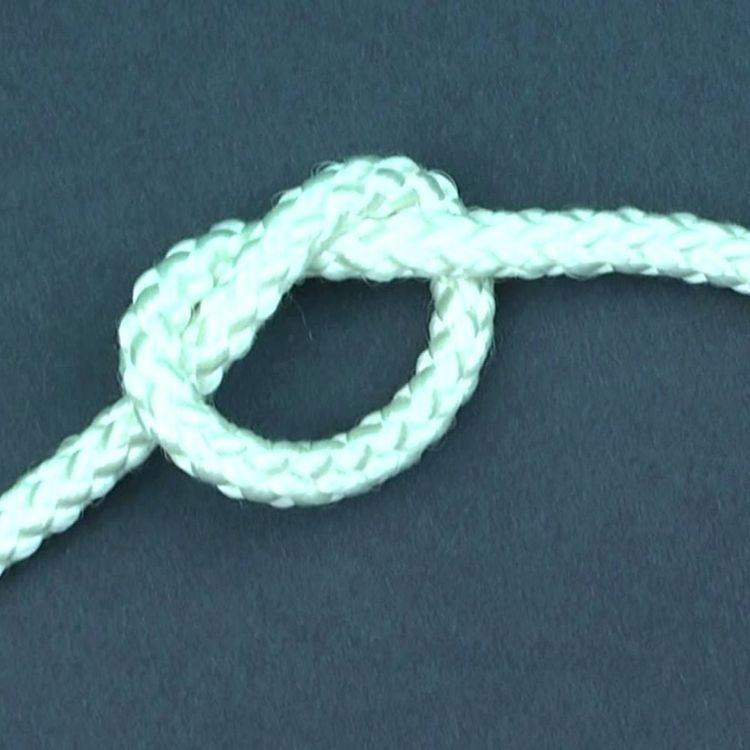Category Stopper Origin Ancient | Efficiency 50% Releasing Extreme jamming | |
 | ||
Names Overhand knot, Thumb knot Related | ||
The overhand knot is one of the most fundamental knots, and it forms the basis of many others, including the simple noose, overhand loop, angler's loop, reef knot, fisherman's knot, and water knot. The overhand knot is a stopper, especially when used alone, and hence it is very secure, to the point of jamming badly. It should be used if the knot is intended to be permanent. It is often used to prevent the end of a rope from unraveling. An overhand knot becomes a trefoil knot, a true knot in the mathematical sense, by joining the ends.
Contents
Tying
There are a number of ways to tie the Overhand knot.
Heraldry
In heraldry, the overhand knot is known as a "Stafford knot", due to use first as a heraldic badge by the "Lords of Stafford," then as a general symbol of Staffordshire.
In nature
As a defensive measure, hagfishes, which resemble eels, produce large volumes of thick slime when disturbed. A hagfish can remove the excess slime, which can suffocate it in a matter of minutes, by tying its own body into an overhand knot, then sliding the knot from its head down to the tail. This action scrapes the slime off the fish's body. Hagfish also tie their bodies into overhand knots in order to create leverage to rip off chunks of their prey's flesh, but do so "in reverse" (starting at the tail, and sliding the knot towards the head for mechanical advantage).
Knot theory
If the two loose ends of an overhand knot are joined together (without creating additional crossings), this becomes equivalent to the trefoil knot of mathematical knot theory.
In paper-folding
If a flat ribbon or strip is tightly folded into a flattened overhand knot, it assumes a regular pentagonal shape.
